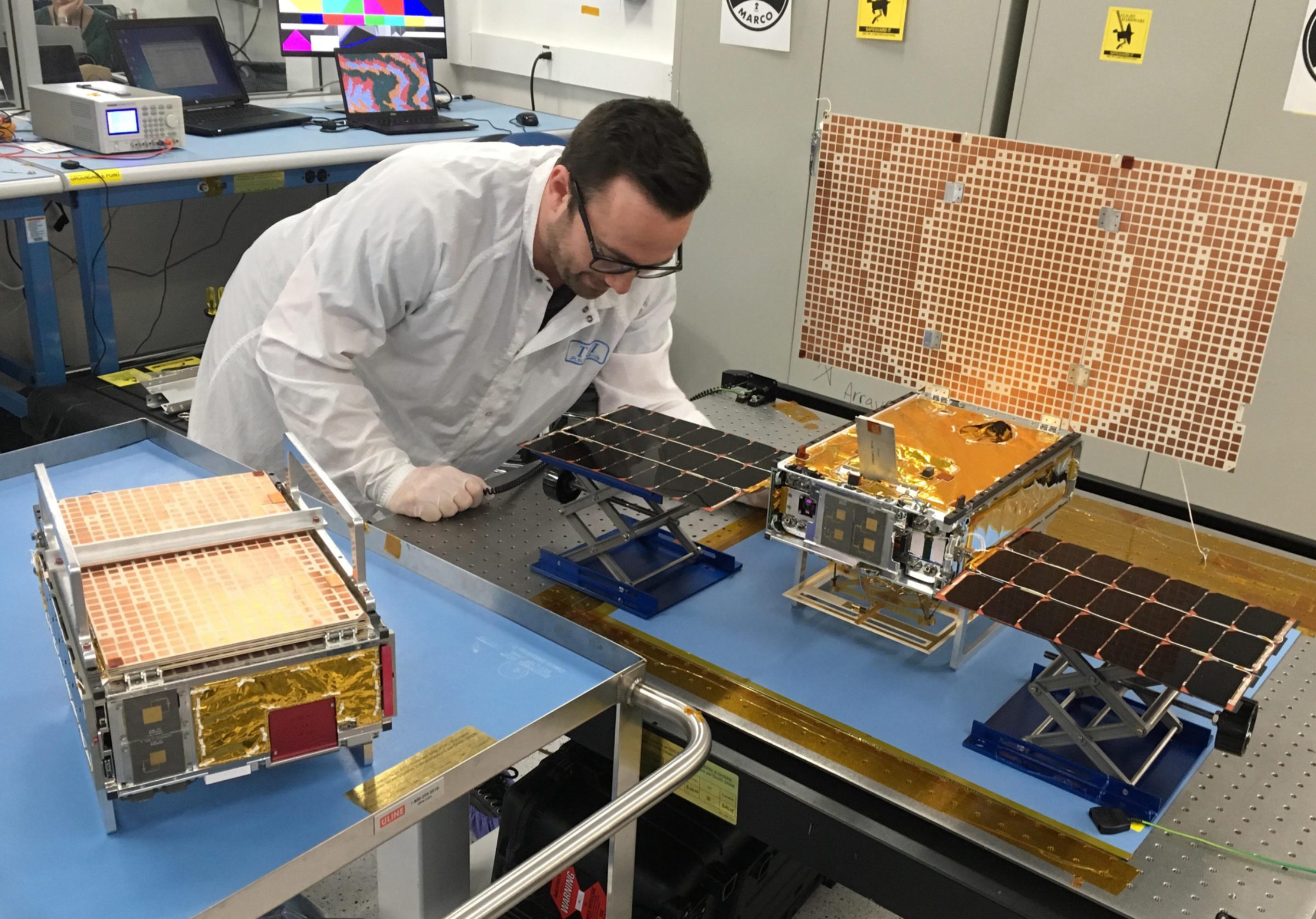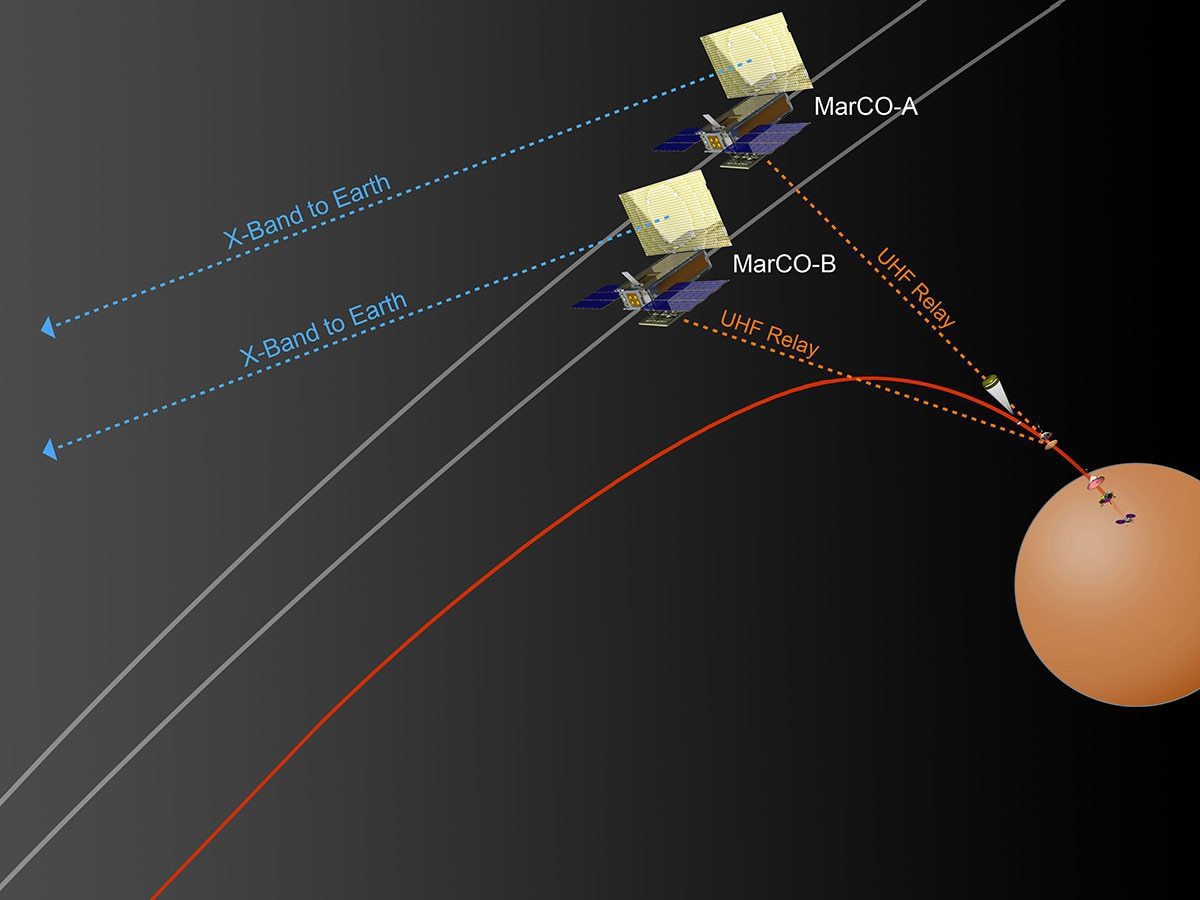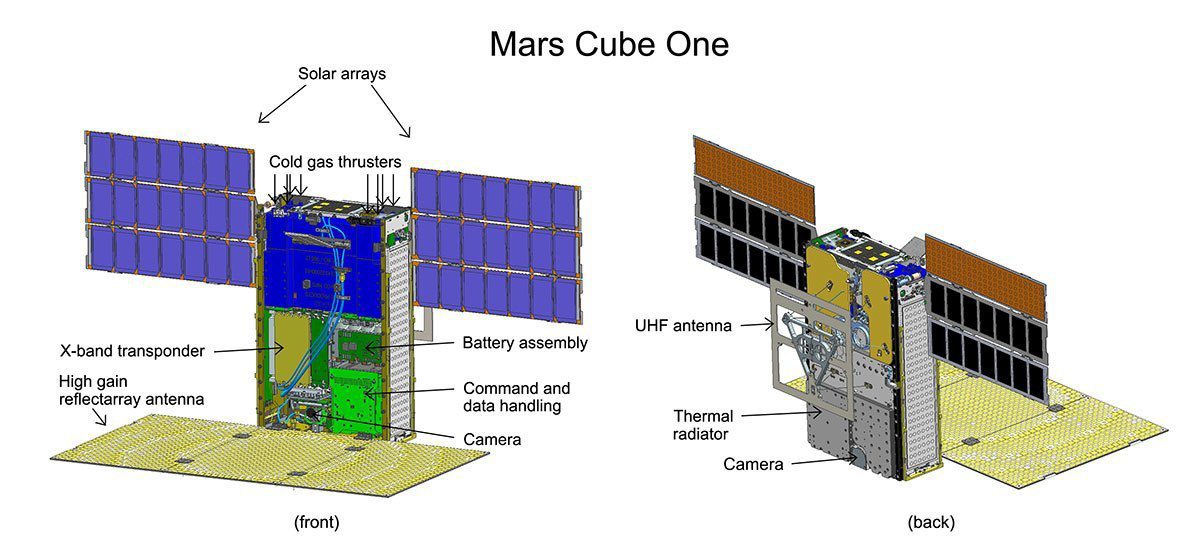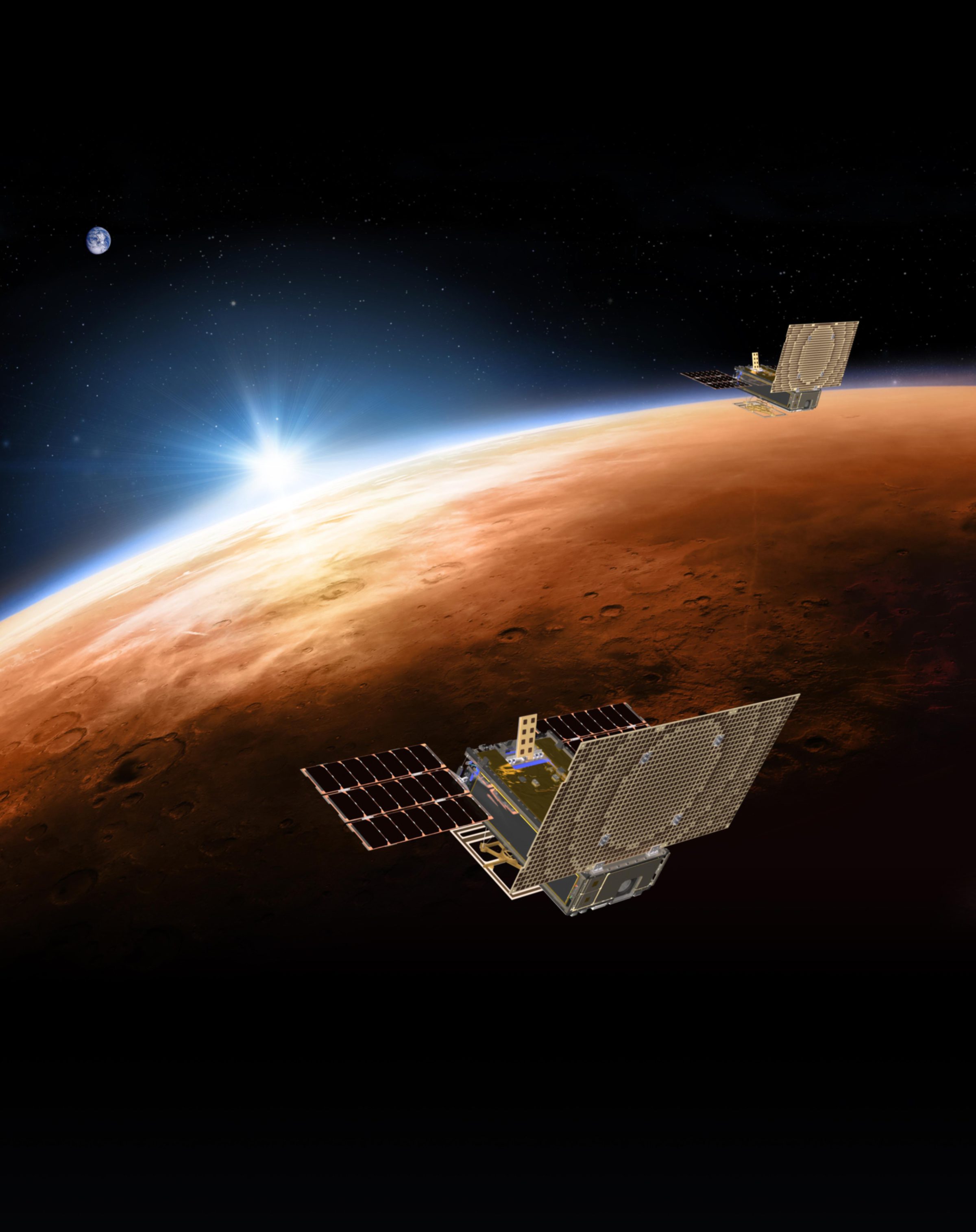Emily Lakdawalla • May 01, 2018
MarCO: CubeSats to Mars!
MarCO or "Mars Cube One" is an experimental mission that will accompany InSight to Mars. It consists of two identical spacecraft, each 36.6 by 24.3 by 11.8 centimeters in size. If successful, they will relay real-time telemetry from InSight to Earth during the landing. MarCO costs $18.5 million.
Did I mention how tiny they are? They are tiny. No spacecraft this small has ever been sent to any other planet.

The MarCO satellites will perform bent-pipe relay of InSight's transmissions during landing: they will receive UHF transmissions from the lander, decode them, and send the decoded data on to Earth. If successful, they will provide mission controllers and Mars fans around the world with live information on the status of the spacecraft during landing. Meanwhile, Mars Reconnaissance Orbiter will record all of the transmissions from the lander without decoding them, saving them for later transmission. If something goes wrong on landing day, it will be the data recordings from Mars Reconnaissance Orbiter that help NASA figure out what went wrong. If everything goes right, we'll learn about it first through MarCO.

With no ability to enter orbit at Mars, the MarCO spacecraft will shoot on past, remaining in solar orbit. I assume their Earth controllers will remain in contact for as long as possible.
Launch day
Check out my preview of the InSight launch for a detailed launch timeline. The MarCO satellites ride to space at the aft end of the Centaur inside a CubeSat dispenser attached to an aft bulkhead carrier. Following the separation of InSight, at about 90 minutes after launch, the dispenser will release MarCO-A. The Centaur will roll 180 degrees and then release MarCO-B about a minute later.
The MarCO satellites have to "detumble" after their release, then deploy their solar arrays, then initiate communications. Their first signals should arrive on Earth within 45 minutes of separation. The two spacecraft will be navigated separately to Mars and have five trajectory correction maneuver opportunities. They use reaction wheels to control their orientation and cold-gas thrusters to maneuver and desaturate the reaction wheels.
A major challenge for smallsats operating at great distances from Earth is deep-space communications, which usually requires bulky dish antennas and significant power. The MarCO spacecraft have flat "reflectarray" X-band antennas that operate at lower power.
Each MarCO has a wide-field camera and a narrow-field camera, each producing 752 by 480 pixel images. The wide-field camera is primarily intended to confirm high-gain antenna deployment. It has a 138-degree diagonal field of view. The narrow-field camera has a 6.8-degree diagonal field of view. It is boresighted opposite the high-gain antenna. I don't know the details of imaging plans.

With low mass and low power comes low cost, particularly for launch. I hope that MarCO will be just the first of many mini-spacecraft to be sent to interplanetary targets: Mars, Moon, and asteroids!

Let’s Go Beyond The Horizon
Every success in space exploration is the result of the community of space enthusiasts, like you, who believe it is important. You can help usher in the next great era of space exploration with your gift today.
Donate Today

 Explore Worlds
Explore Worlds Find Life
Find Life Defend Earth
Defend Earth


